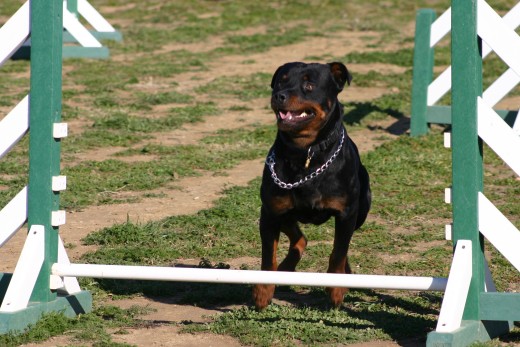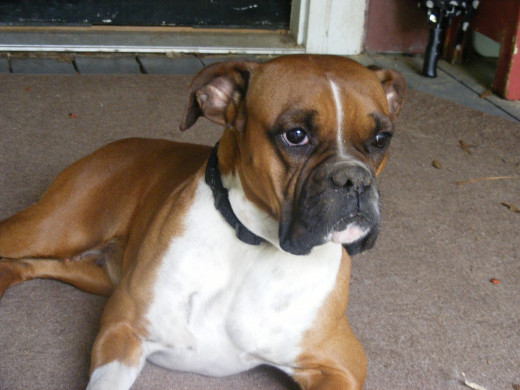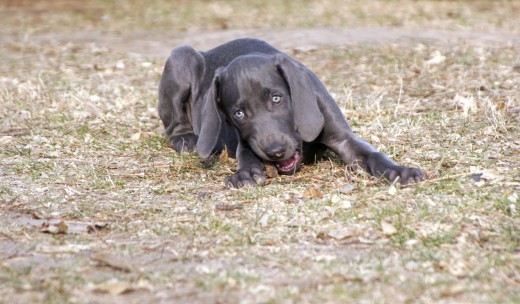- HubPages»
- Pets and Animals»
- Dogs & Dog Breeds»
- Dog Health
Dog Health - Canine Teeth

Dog Health Problems
How are those canine teeth doing - the ones you see every day? If you’re a dog owner, I’m sure you’re concerned with dog health. Most pet owners want their animals to be as healthy as possible, but sometimes certain areas are overlooked. For example, do you ever really think about canine dental health when you’re buying pet supplies and preventative measures? Dog dental health is more important than you might think. There’s an old saying about horses – “No hoof, no horse,” indicating the importance of good hoof care. With canines, the saying could be tweaked to “No teeth, no dog.” I mean, really, try to imagine a pooch without dogs teeth! Dogs need strong teeth and healthy gums to break down foods in order to properly absorb nutrients, and when there’s a problem with canine teeth, it might not stop with the mouth. Also, some oral problems are actually symptoms of conditions that are even more serious. Read below to find out how dental problems can cause other health problems, having a detrimental effect on overall dog health.You have to take care of those canine teeth!
Dog Health Problems and Canine Teeth Cleaning:

Canine Teeth
How much do you know about canine teeth? Puppies aren’t born with teeth – they don’t need them. The baby teeth usually start pushing through the gums when the pup is three or four weeks old. In all, puppies wind up with twenty-eight baby teeth. Then, at a few months of age, the puppy starts losing its baby teeth and getting permanent dogs teeth to replace them.
Dogs teeth include four types – the canine teeth, the incisors, the premolars, and the molars. Different types of dogs teeth serve different functions. For example, the canine teeth – those long, sharp teeth that look like fangs – are used to grab and hold, to rip and tear, and to bite other animals and humans in self defense.
The second type of dogs teeth, the incisors, are used mostly for nibbling. You’ve probably seen your dog making a series of quick nibbles on its own coat in an effort to catch annoying fleas and to scratch an itch. In fact, your dog might do this to you sometimes, too, or to other pets in your household. It’s a form of grooming, and your pooch uses its incisors for this activity.
Another type of dogs teeth, the premolars, are located just behind the canine teeth. Dogs use the premolars mostly for chewing. The powerful jaw muscles and the sharp teeth join forces to grind pieces of meat and other foods into smaller bits so that the foods can be swallowed and digested.
The last type of canine teeth are the molars. The function of these teeth is largely to crush. Members of the canine family use the teeth for crunching up bones, hard kibble, and crunchy dog treats. Some dogs might also use their molars on sticks and twigs. The molars, by the way, are the last teeth a dog gets.

Dog Dental Problems
Dog dental problems can be much the same as oral problems with humans. One of the biggest culprits is plaque. Plaque forms from bits of food and saliva, which attract bacteria. Plaque can be found on the teeth and under the gums. If left unchecked, the plaque will turn yellow or brown, and it will harden into a substance called tartar.
Plaque and tartar are certainly unsightly, but even worse, they can be detrimental to your dog’s dental health and even to its overall health. Eventually, the bacteria that are lurking in the plaque and tartar can result in periodontal disease, which has the potential to negatively affect the gums, the jaw bones, and organs throughout the body. Gums can become so inflamed and painful that eating becomes difficult, and eventually, the teeth can loosen and fall out. Needless to say, a dog that can’t eat or chew its food properly isn’t going to be in the best of health.
Other dog dental problems might involve the bite. Just as with humans, a dogs teeth are supposed to “fit together” in a certain way. The perfect bite is when the top front teeth fight slightly over the bottom front teeth. Unfortunately, not all dogs have a perfect bite. You’ve undoubtedly seen a dog with an underbite – when the lower teeth jut out past the upper teeth. In some breeds this is normal. The English bulldog comes to mind. The opposite can occur, too – when the dog’s top teeth overlap its bottom teeth too much. This condition is often called an overbite.
Canine Teeth problems having to do with bite aren’t always serious in the case of pet canines. Depending on how severe the problem is, bite could have an impact on how well the animal is able to kill prey. With domestic dogs, however, it might just be a cosmetic problem. Also, some dog breeds might have a natural underbite. This is usually seen in bulldogs and similar breeds.

Canine Dental Health
By now, you probably realize how important canine dental health is. Bad breath is often a sign of poor dog dental health, so if you notice this problem, you need to find out what’s causing it. Needless to say, examining a dogs teeth is usually easier said than done. If you begin slowly and gradually when the dog is still a small puppy, however, your job will be much easier. Your pet will get used to having its teeth and gums examined and will eventually stop fighting the procedure. For good canine dental health, you need to check your dogs teeth at least once or twice a week. Look for tartar, swollen gums, loose teeth, missing teeth, and even broken teeth. The gums should be pink, but they shouldn’t be red or bleeding. Pale gums can indicate anemia and are often associated with dog health problems like internal parasites, external parasites, cancer, shock, infections, allergic reactions, or internal bleeding.
Dog Toothbrush - Canine Toothpaste:
Dog Teeth Cleaning
Dog dental cleaning is an important step in preventing some dog dental problems. You brush your teeth several times a day, right? Amazingly, many dog owners somehow overlook tooth brushing when it comes to canine dental health. Don’t use your own human toothpaste on Fido. There’s a special dog toothpaste that can be found in most pet stores, but it’s easier to buy online from sites that sell pet supplies. When you brush your pooch’s teeth, pay special attention to the outside surfaces of the rear teeth, where you’re likely to find the most plaque.
One of the easiest ways to get your pooch used to dog teeth cleaning is to use a washcloth with just a little canine toothpaste on it. It will feel strange to your pet at first, but with gentleness and persistence on your part, after a few cleanings the dog won’t mind it. Once the pooch is used to the washcloth, switch to a finger brush. This is a soft plastic brush with flexible bristles that fits over the tip of your finger. Most dogs don’t find a finger tooth brush as intimidating or as intrusive as a regular dog toothbrush. When your pet gets used to having its teeth cleaned with a soft finger brush, you might want to start using a regular dog toothbrush.
Standard dog toothbrushes look much like toothbrushes for humans. With some, however, the bristles on both edges of the head are at a sharper angle, allowing the top and sides of the dogs teeth to all be cleaned at the same time. Be sure to use the right size dog toothbrush for your dog. If you try to cram a large brush into a small dog’s mouth, your pet will learn to hate dog dental cleaning. Make the procedure as comfortable as possible.
Although prevention is a major aspect with canine teeth cleaning, some issues might still occur. Perhaps you got behind with your dog teeth cleaning, or maybe the pooch had dental problems when you purchased or adopted it into your family. Either way, checking for dog dental health is a good way to take care of problems before they get out of hand. Keep up with your pet’s regular veterinary health checkups. The vet will examine your dogs teeth for any problems. He might also suggest professional dog dental cleaning.
How to Brush Your Dog's Teeth:
Dog Dental Chews:
Dog Dental Chews - Greenies
Another way to improve and maintain your dog’s health, canine teeth speaking, is with dog dental chews. Dogs love to chew, and they love dog treats. Use their natural affinities to your advantage. Lots of pet supplies stores and sites offer healthy dog treats and dog dental chews, and one of the best is a product called Greenies. Canine Greenies are designed specifically for dog dental health. They’re designed with nooks and crannies, providing your dog with lots of chewing satisfaction. As the canine teeth sink into these dog treats, tartar and plaque are removed. Greenies have other dog health benefits, too. They contain antioxidants that will give a boost to the immune system, and they also provide vital minerals and healthy omega-3 fats. As your dog enjoys Greenies, the fish oil in the dog treats will greatly benefit its coat and skin, too. Chewing Greenies will even help improve brain function! Your dog will think Greenies are great dog treats because he’ll love the flavor. They come in five different sizes, and they’re totally digestible, unlike some other dog treats. Just one Greenies a day will help maintain canine dental health, and your furkid’s breath will smell great! Give Greenies a try next time you’re buying pet supplies. It’s one of the easiest ways to address dog dental problems and to keep your dog’s health robust. Pet care products like these will make caring for those canine teeth a heck of a lot easier!










